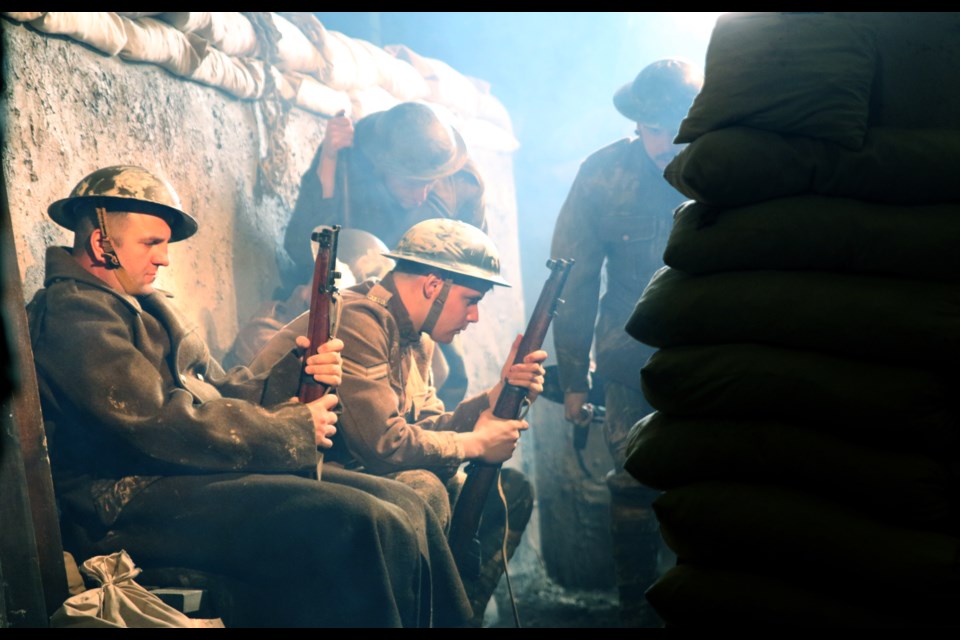THUNDER BAY - As a member of the 18 Field Ambulance with the Canadian Armed Forces, Robert Neron has spent his fair share of time out in the field. But this weekend he put on a uniform that was more than 100-years-old to help recreate a scene that is similar to what he has experienced, but also very different.
“Right now we are shooting a trench scene and I’ve sat in them long enough and been cold and hungry and doing all that before, so I can look tired inside of a trench, which is what they need me to do right now,” Neron said.
Neron is an extra in the film Lakehead at War, which wrapped up its fifth day of shooting on Sunday. The docu-drama is part of the larger commemoration of the centennial of the First World War and focuses on the city’s contributions to the war, from the soldiers on the battlefields, to the home front, to remembrance.
Director Ron Harpelle said the film uses a series of letters to tell the story of a soldier who enlisted in the 52nd Battalion in Port Arthur and served in Europe.
“It culminates with the return home of a soldier, but it also culminates with the 1921 meeting in Thunder Bay at the Prince Arthur Hotel where it was decided that the poppy would be the symbol of remembrance,” Harpelle said.
The film is just one part of a multi-phase project, which also includes a book and short vignettes that share details and facts about the First World War, and builds on the Thunder Bay Public Library World War One Centennial Project website launched earlier this year.
The film is sponsored by the city of Thunder Bay and the $250,000 budget it is being funded by the city and a grant from the Northern Ontario Heritage Fund Corporation.
The production largely takes place in Thunder Bay and uses local film crews, actors, researchers, makeup artists, costume designers, and experts, which Harpelle said is contributing more money back into the local economy.
Shooting took place across the city, including the Lakehead Psychiatric Hospital, the Armoury, and Trinity Hall where a set of a trench was built.
Filming also took place at war cemeteries in Europe and additional footage will be filmed in France and England this year.
Harpelle said it was important to film the final resting places of more than 600 soldiers from the 52nd Battalion who were killed during the war.
“Many of those people are forgotten now,” he said. “Maybe they no longer have any attachment or the family no longer has any attachment to this region, but as much as possible we tried to find our boys, their graves and we were pretty successful. But there was something like 600 that didn’t make it back. From this town.”
More than 4,000 soldiers enlisted from the region during the war and more than 2,000 were killed or wounded. Knowing that so many young soldiers did not return really gives putting on the uniform and stepping into those boots even more weight.
“I do have a new understanding of what they could have possibly went through,” Neron said. “But if you weren’t there, you would never actually know.”
The film will be screened on Nov. 4 during Remembrance Week next November, which will include a full military parade in the city.
For Harpelle, the centennial commemorations of the First World War may be the last for the war that was to end all wars, because as more years pass, the more events from the past recede into time.
“So what we are doing is producing something, along with the book project and the library project that sort of perpetuates that memory, an important memory in Thunder Bay into the future,” he said.
